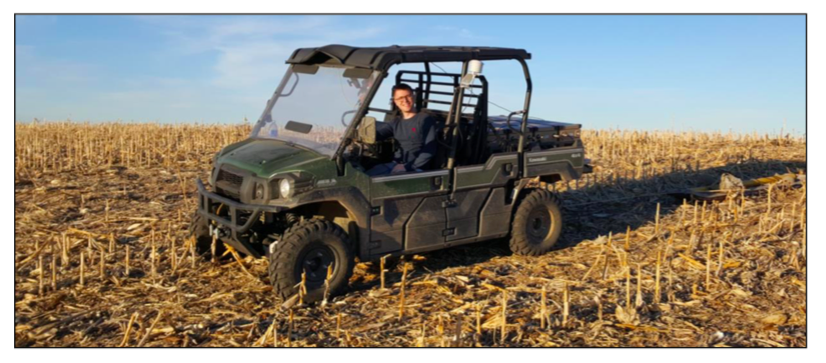
William Avery will give his masters defense, “The Cosmic-ray Neutron Probe Method for Estimating Field Scale Soil Water Content: Advances and Applications,” at 1 p.m. Friday, May 13, in 901 Hardin Hall.
His abstract:
“The need for accurate, real-time, reliable, and multi-scale soil water content (SWC) monitoring is critical for a multitude of scientific disciplines trying to understand and predict the earth’s terrestrial energy, water, and nutrient cycles. One promising technique to help meet this demand is fixed and roving cosmic-ray neutron probes (CRNP). However, the relationship between observed low-energy neutrons and SWC is affected by local soil and vegetation calibration parameters. This effect may be accounted for by a calibrated equation based on local soil type and the amount of standing biomass. However, determining the calibration parameters for this equation is labor and time intensive, thus limiting the full potential of the roving CRNP in large surveys and long transects, or its use in novel environments. In this work, our objective is to develop and test the accuracy of using globally available datasets (clay weight percent, soil bulk density, and soil organic carbon) to support the operability of the CRNP. Here, we develop a 1 km product of soil lattice water over the CONtinental United States (CONUS) using a database of in-situ calibration samples and globally available soil taxonomy and soil texture data. We then test the accuracy of the global dataset in the CONUS using comparisons of 61 in-situ samples of clay percent (RMSE = 5.45 wt. %, R2 = 0.68), soil bulk density (RMSE = 0.173 g/cm3, R2 = 0.203), and soil organic carbon (RMSE = 1.47 wt. %, R2 = 0.175). In addition, we conduct an uncertainty analysis of the global soil calibration parameters using a Monte Carlo error propagation analysis (maximum RSME ~0.035 cm3/cm3 at a SWC = 0.40 cm3/cm3). Fast growing crops (i.e. maize and soybeans) contribute to the CRNP signal primarily through the water within their biomass and this signal must be minimized for soil moisture retrieval. This was done by using a vegetation index derived from MODIS imagery as a proxy for standing wet biomass (RMSE < 1 kg/m2). Lastly, we make recommendations to the design and validation of future roving CRNP experiments.”
More details at: snr.unl.edu